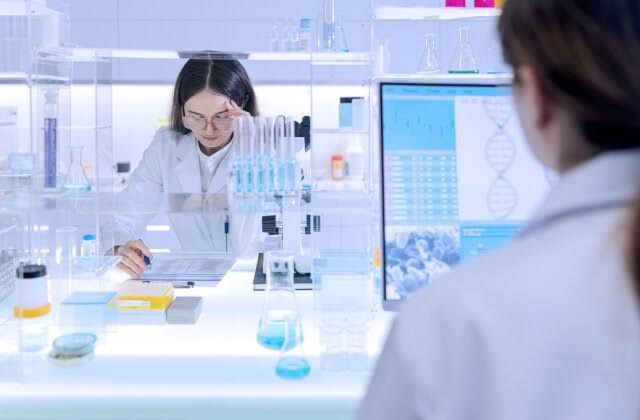
A researcher is studying a new strain of bacteria that exhibits a unique mutation in its genetic code. Upon analysis, it was found that the mutation affects the second position of the codon for a specific amino acid. What is the likely outcome of this mutation?
- a) It will always result in a stop codon.
- b) It may lead to an amino acid change but not necessarily a stop codon. ✓
- c) It will have no effect on the protein produced.
- d) It will cause the protein to fold incorrectly.
To understand the likely outcome of a mutation affecting the second position of a codon, we first need to consider how codons function in protein synthesis. A codon is a sequence of three nucleotides that corresponds to a specific amino acid or a stop signal during translation. The genetic code is generally degenerate, meaning that multiple codons can encode for the same amino acid.
Step 1: Understanding Codon Structure
Each codon consists of three nucleotide bases. The first position, second position, and third position can each be occupied by one of four nucleotides: adenine (A), cytosine (C), guanine (G), or uracil (U) in RNA (or thymine (T) in DNA). The second position is particularly important because it can influence which amino acid is encoded.
Step 2: Impact of Mutations on Codons
When a mutation occurs at the second position of a codon, it may lead to several outcomes:
- Silent Mutation: If the change does not alter the amino acid due to redundancy in the genetic code.
- Missense Mutation: If the change results in a different amino acid being incorporated into the protein.
- Nonsense Mutation: If the change creates a stop codon prematurely terminating translation.
However, mutations at the second position are less likely to result in stop codons compared to changes at other positions. This is because many amino acids are encoded by multiple codons, and while some changes may lead to an entirely different amino acid, they do not necessarily lead to a stop signal.
Step 3: Evaluating Options
Now let’s evaluate each option provided:
a) It will always result in a stop codon.
- This statement is incorrect because mutations at this position do not always create stop codons; they often result in missense mutations instead.
b) It may lead to an amino acid change but not necessarily a stop codon.
- This statement accurately reflects what can happen with mutations at this position. It acknowledges that while an amino acid change is possible, it does not guarantee that it will result in a stop codon.
c) It will have no effect on the protein produced.
- This option could be true if it were a silent mutation; however, it does not encompass all possibilities since there could be an effect due to missense mutations.
d) It will cause the protein to fold incorrectly.
- While this could happen if an essential residue was altered leading to misfolding, it cannot be guaranteed as an outcome for every mutation affecting this position.
Given these evaluations, option b stands out as the most accurate representation of what happens when there is a mutation at the second position of a codon.
Conclusion
Based on this analysis, I conclude that it may lead to an amino acid change but not necessarily a stop codon.







